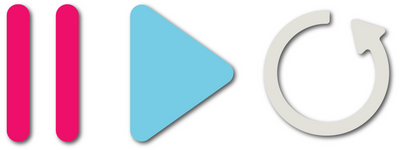Vocal EQ
EQ is used in three ways to treat vocals:
Corrective EQ
- Corrective EQ is used to remove unpleasant and unnecessary frequencies from the signal
Enhance / Sweeten
- Enhance or Sweeten EQ is used to shape the overall tone of the signal (ex. more air),
Effect
- We can use EQ as an effect to radically change the frequency characteristics of a signal (as in the case of 'telephone EQ')
While performing any kind of frequency tweaks remember the golden EQ maxim: cut narrow, boost wide and cut is more natural than boost.
When cutting frequencies start by removing unnecessary lows. Vocal recordings often include low-end content like breath blasts and mic stand noises that are unnecessary and consume headroom. To lose them, set up an 18dB high-pass filter then increase the cutoff frequency into the 60-100Hz zone until you hear a marked change in the tonality of the sound. When you reach this point, back down a little. In the context of the final mix, you may find yourself rolling away as high as 300Hz - especially in a busy arrangement.
To remove unpleasant rouge frequencies, often caused by the room in which the recording was made, set up a parametric EQ with the ability to fine-tune the cutoff point, dial in the narrowest possible Q value and then use the 'search and destroy' method to identify unwanted peaks. These peaks are normally fairly obvious, identified by a ringing, wailing sound that sticks out when you dial through the frequencies. Use a graphic display to help identify when surpluses of signal are concentrated. When you find a rogue frequency, widen the Q a little then dial in a dip of between 3-10dB to control it. A/B between the original signal and the treated one to check any changes you make help rather than hinder the sound.
'Usual suspect' areas that cause problems include:
- 150-400Hz: Boxiness - reduce here to open the sound.
- 1-1.5kHz: Nasal frequencies and 'honkiness' - often the result of a poor recording environment.
- 2.5-6kHz: Ringing and unpleasant higher-mid peaks.
When unwanted peaks are only found in specific phrases (when the vocalist moves into a more nasal register to sing a higher note, for example), Dynamic EQ can be useful as it only notices out (or boosts) select frequencies when they exceed a given threshold in the same way as a de-esser.
To shape the tone of a vocal part, use the best 'sweetening' EQ you have; a clone or plugin version of the Pultec EQP-1A or Neve 1073 is a good place to start. Classic EQs for tone shaping tend to employ wide, carefully sculpted bell curves that sweeten (or soften) the most flattering musical frequencies. In the case of vocals the main arenas of interest are typically:
- 200-600Hz: Warmth/Body/Chest
- 2.5-6kHz: Presence/Articulation
- 8-10kHz: Brightness/Air
When adding air, a boost of between 1-2dB is usually enough. Beware of going too far: excessive high-end boost exacerbates sibilance and can result in a grating mix.
To add low-end body to a vocal without piling on the EQ, try an enhancement tool like Little Labs Voice of God or a sub bass/harmonic synthesizer like the Aphex Aural Exciter. Used sparingly, these can sometimes be all you need to give a touch more girth and confidence to a lackluster vocal.
At the end of the spectrum, for adding high-end air and sparkle, specialist EQs like UBK's Clariphonic and effects like the Aural Exciter can help open out a sound and give it an airy sheen. Again, use in moderation.
Where either the backing orchestration or tone of the lead vocal changes between the verse and chorus (there might be a whispered style in the verse and a more energetic sound int eh chorus, for example) use different vocal EQ treatments for different sections. You can either do this using automation or by splitting the verse and chorus vocals onto separate audio tracks and treating each independently.
When radically changing a vocal part using EQ, go wild with the settings. The point here is not to polish a natural sounding performance but to transform it into something different - the more extreme the better. The most common example is the must-used telephone effect, which combines a sharp low-pass filter around 350-900Hz with a high-pass in the 2.2-2.5kHz region. Follow this with a compressor and a bit-crusher to accentuate the effect.
Effects like telephone EQ are often the most effective when used sparingly on select phrases or automated vocal spins.

Leave a comment